Exploring and Enhancing Community Disaster Resilience: Perspectives from Different Types of Communities
Abstract
1. Introduction
2. Theoretical Background
2.1. Community
2.2. Community Disaster Resilience
3. Materials and Methods
3.1. Study Area
3.2. Data Source
3.3. Variables and Measurements
3.4. Data Analysis
4. Results
4.1. Differences in Dimensions of Three Types of Communities
4.2. Differences in Disaster Resilience of Different Communities
5. Discussion
6. Conclusions
- (1)
- The overall evaluation of disaster resilience in different types of communities ranged from 3 to 4, with a mean value of about 3.72. This result showed that the respondents’ overall evaluation of their community’s resilience to the “7.20” rainstorm disaster was relatively high.
- (2)
- In general, the highest score was for commercial housing communities at 3.7609, followed by urban village communities at 3.7269, and employee family home communities scored the lowest at 3.6959. In terms of community resilience to respond to sudden rainstorm disasters, commercial housing communities performed the best, followed by urban village communities. Employee family housing communities performed the worst.
- (3)
- Specifically, commercial housing communities scored highest in the three dimensions of human capital, physical infrastructure capital, and adaptation. Urban village communities scored highest in the three dimensions of social capital, institutional capital, and community competence, and employee family housing communities scored the lowest in each dimension.
- (4)
- There were some differences among the three types of communities in each dimension. The three types of communities differed the most in human capital, followed by community competence and social capital, adaptation, and finally institutional capital and physical infrastructure.
Author Contributions
Funding
Data Availability Statement
Conflicts of Interest
References
- Dessavre, D.G.; Ramirez-Marquez, J.E.; Barker, K. Multidimensional Approach to Complex System Resilience Analysis. Reliab. Eng. Syst. Saf. 2016, 149, 34–43. [Google Scholar] [CrossRef]
- Meerow, S.; Newell, J.P. Resilience and Complexity: A Bibliometric Review and Prospects for Industrial Ecology. J. Ind. Ecol. 2015, 19, 236–251. [Google Scholar] [CrossRef]
- Alfaras, M. Developing an Improved Disaster Management Framework to Enhance Resilience in Kuwait; University of Salford: Salford, UK, 2020; ISBN 9798351482484. [Google Scholar]
- Pörtner, H.O.; Roberts, D.C.; Adams, H.; Adler, C.; Aldunce, P.; Ali, E.; Begum, R.A.; Betts, R.; Kerr, R.B.; Biesbroek, R. Climate Change 2022: Impacts, Adaptation and Vulnerability; IPCC: Geneva, Switzerland, 2022. [Google Scholar]
- Murphy, B.L. Locating Social Capital in Resilient Community-Level Emergency Management. Nat. Hazards 2007, 41, 297–315. [Google Scholar] [CrossRef]
- Schneider, S.K. Dealing with Disaster: Public Management in Crisis Situations; Routledge: London, UK, 2014; ISBN 1-317-47336-1. [Google Scholar]
- Leichenko, R. Climate Change and Urban Resilience. Curr. Opin. Environ. Sustain. 2011, 3, 164–168. [Google Scholar] [CrossRef]
- Godschalk, D.R. Urban Hazard Mitigation: Creating Resilient Cities. Nat. Hazards Rev. 2003, 4, 136–143. [Google Scholar] [CrossRef]
- Meerow, S.; Newell, J.P.; Stults, M. Defining Urban Resilience: A Review. Landsc. Urban Plan. 2016, 147, 38–49. [Google Scholar] [CrossRef]
- Cutter, S.L.; Barnes, L.; Berry, M.; Burton, C.; Evans, E.; Tate, E.; Webb, J. A Place-Based Model for Understanding Community Resilience to Natural Disasters. Glob. Environ. Chang. 2008, 18, 598–606. [Google Scholar] [CrossRef]
- Khalili, S.; Harre, M.; Morley, P. A Temporal Framework of Social Resilience Indicators of Communities to Flood, Case Studies: Wagga Wagga and Kempsey, NSW, Australia. Int. J. Disaster Risk Reduct. 2015, 13, 248–254. [Google Scholar] [CrossRef]
- Rose, A.; Krausmann, E. An Economic Framework for the Development of a Resilience Index for Business Recovery. Int. J. Disaster Risk Reduct. 2013, 5, 73–83. [Google Scholar] [CrossRef]
- Cutter, S.L.; Ash, K.D.; Emrich, C.T. The Geographies of Community Disaster Resilience. Glob. Environ. Chang. 2014, 29, 65–77. [Google Scholar] [CrossRef]
- Mulligan, M.; Steele, W.; Rickards, L.; Fünfgeld, H. Keywords in Planning: What Do We Mean by ‘Community Resilience’? Int. Plan. Stud. 2016, 21, 348–361. [Google Scholar] [CrossRef]
- Sharifi, A.; Yamagata, Y. On the Suitability of Assessment Tools for Guiding Communities towards Disaster Resilience. Int. J. Disaster Risk Reduct. 2016, 18, 115–124. [Google Scholar] [CrossRef]
- Kumar, C. Revisiting ‘Community’ in Community-Based Natural Resource Management. Community Dev. J. 2005, 40, 275–285. [Google Scholar] [CrossRef]
- Boughton, G. The Community: Central to Emergency Risk Management. Aust. J. Emerg. Manag. 1998, 13, 2–5. [Google Scholar]
- Phillips, B.D.; Neal, D.M.; Webb, G.R. Introduction to Emergency Management; CRC Press: Boca Raton, FL, USA, 2016; ISBN 1-315-39470-7. [Google Scholar]
- Cox, R.S.; Perry, K.-M.E. Like a Fish Out of Water: Reconsidering Disaster Recovery and the Role of Place and Social Capital in Community Disaster Resilience. Am. J. Community Psychol. 2011, 48, 395–411. [Google Scholar] [CrossRef]
- Kruse, S.; Abeling, T.; Deeming, H.; Fordham, M.; Forrester, J.; Jülich, S.; Karanci, A.N.; Kuhlicke, C.; Pelling, M.; Pedoth, L. Conceptualizing Community Resilience to Natural Hazards–the emBRACE Framework. Nat. Hazards Earth Syst. Sci. 2017, 17, 2321–2333. [Google Scholar] [CrossRef]
- Norris, F.H.; Stevens, S.P.; Pfefferbaum, B.; Wyche, K.F.; Pfefferbaum, R.L. Community Resilience as a Metaphor, Theory, Set of Capacities, and Strategy for Disaster Readiness. Am. J. Community Psychol. 2008, 41, 127–150. [Google Scholar] [CrossRef] [PubMed]
- Alshehri, S.A.; Rezgui, Y.; Li, H. Delphi-Based Consensus Study into a Framework of Community Resilience to Disaster. Nat. Hazards 2015, 75, 2221–2245. [Google Scholar] [CrossRef]
- MacQueen, K.M.; McLellan, E.; Metzger, D.S.; Kegeles, S.; Strauss, R.P.; Scotti, R.; Blanchard, L.; Trotter, R.T. What Is Community? An Evidence-Based Definition for Participatory Public Health. Am. J. Public Health 2001, 91, 1929–1938. [Google Scholar] [CrossRef]
- Boon, H.J.; Cottrell, A.; King, D.; Stevenson, R.B.; Millar, J. Bronfenbrenner’s Bioecological Theory for Modelling Community Resilience to Natural Disasters. Nat. Hazards 2012, 60, 381–408. [Google Scholar] [CrossRef]
- Sherrieb, K.; Norris, F.H.; Galea, S. Measuring Capacities for Community Resilience. Soc. Indic. Res. 2010, 99, 227–247. [Google Scholar] [CrossRef]
- Kloos, B.; Hill, J.; Thomas, E.; Wandersman, A.; Elias, M.J.; Dalton, J.H. Community Psychology; Cengage Learn: Belmont, CA, USA, 2012. [Google Scholar]
- Renschler, C.S.; Frazier, A.E.; Arendt, L.A.; Cimellaro, G.P.; Reinhorn, A.M.; Bruneau, M. Developing the ‘PEOPLES’ Resilience Framework for Defining and Measuring Disaster Resilience at the Community Scale. In Proceedings of the 9th US National and 10th Canadian Conference on Earthquake Engineering, Toronto, ON, Canada, 25–29 July 2010; pp. 25–29. [Google Scholar]
- Manyena, S.B. Disaster Resiliencein Development and Humanitarian Interventions; University of Northumbria at Newcastle (United Kingdom) ProQuest Dissertations Publishing: Newcastle upon Tyne, UK, 2009. [Google Scholar]
- Adger, W.N. Social and Ecological Resilience: Are They Related? Prog. Hum. Geogr. 2000, 24, 347–364. [Google Scholar] [CrossRef]
- Bruneau, M.; Chang, S.E.; Eguchi, R.T.; Lee, G.C.; O’Rourke, T.D.; Reinhorn, A.M.; Shinozuka, M.; Tierney, K.; Wallace, W.A.; von Winterfeldt, D. A Framework to Quantitatively Assess and Enhance the Seismic Resilience of Communities. Earthq. Spectra 2003, 19, 733–752. [Google Scholar] [CrossRef]
- Collier, W.M.; Jacobs, K.R.; Saxena, A.; Baker-Gallegos, J.; Carroll, M.; Yohe, G.W. Strengthening Socio-Ecological Resilience through Disaster Risk Reduction and Climate Change Adaptation: Identifying Gaps in an Uncertain World. Environ. Hazards 2009, 8, 171–186. [Google Scholar] [CrossRef]
- Obrist, B.; Pfeiffer, C.; Henley, R. Multi-layered Social Resilience: A New Approach in Mitigation Research. Prog. Dev. Stud. 2010, 10, 283–293. [Google Scholar] [CrossRef]
- Castleden, M.; McKee, M.; Murray, V.; Leonardi, G. Resilience Thinking in Health Protection. J. Public Health 2011, 33, 369–377. [Google Scholar] [CrossRef]
- Kwok, A.H.; Paton, D.; Becker, J.; Hudson-Doyle, E.E.; Johnston, D. A Bottom-up Approach to Developing a Neighbourhood-Based Resilience Measurement Framework. Disaster Prev. Manag. 2018, 27, 255–270. [Google Scholar] [CrossRef]
- Longstaff, P.H.; Armstrong, N.J.; Perrin, K.; May, W.; Hidek, M.A. Building Resilient Communities: A Preliminary Framework for Assessment. Homel. Secur. Aff. 2010, 6, 23. [Google Scholar]
- Links, J.M.; Schwartz, B.S.; Lin, S.; Kanarek, N.; Mitrani-Reiser, J.; Sell, T.K.; Watson, C.R.; Ward, D.; Slemp, C.; Burhans, R.; et al. COPEWELL: A Conceptual Framework and System Dynamics Model for Predicting Community Functioning and Resilience After Disasters. Disaster Med. Public Health Prep. 2018, 12, 127–137. [Google Scholar] [CrossRef]
- Paton, D.; Johnston, D. Disasters and Communities: Vulnerability, Resilience and Preparedness. Disaster Prev. Manag. Int. J. 2001, 10, 270–277. [Google Scholar] [CrossRef]
- Collins, M.; Carlson, J.; Petit, F. Community Resilience: Measuring a Community’s Ability to Withstand. WIT Trans. Built Environ. 2011, 119, 111–123. [Google Scholar]
- Birkland, T.A. Lessons of Disaster: Policy Change after Catastrophic Events; Georgetown University Press: Washington, DC, USA, 2006; ISBN 1-58901-359-X. [Google Scholar]
- Klein, R.J.T.; Nicholls, R.J.; Thomalla, F. Resilience to Natural Hazards: How Useful Is This Concept? Environ. Hazards 2003, 5, 35–45. [Google Scholar] [CrossRef]
- Cox, R.S.; Hamlen, M. Community Disaster Resilience and the Rural Resilience Index. Am. Behav. Sci. 2015, 59, 220–237. [Google Scholar] [CrossRef]
- Buckle, P. Assessing Social Resilience. Disaster Resil. Integr. Approach 2006, 88, 104. [Google Scholar]
- McManus, S.; Seville, E.; Vargo, J.; Brunsdon, D. Facilitated Process for Improving Organizational Resilience. Nat. Hazards Rev. 2008, 9, 81–90. [Google Scholar] [CrossRef]
- Pfefferbaum, B.J.; Reissman, D.B.; Pfefferbaum, R.L.; Klomp, R.W.; Gurwitch, R.H. Building Resilience to Mass Trauma Events. In Handbook of Injury and Violence Prevention; Doll, L.S., Bonzo, S.E., Sleet, D.A., Mercy, J.A., Eds.; Springer: Boston, MA, USA, 2007; pp. 347–358. ISBN 978-0-387-85769-5. [Google Scholar]
- Henan Government. Available online: https://www.henan.gov.cn/2023/06-07/2757295.html (accessed on 5 March 2024).
- Liu, X.; Yang, M.; Wang, H.; Liu, K.; Dong, N.; Wang, H.; Zhang, L.; Fan, W. Moisture Sources and Atmospheric Circulation Associated with the Record-Breaking Rainstorm over Zhengzhou City in July 2021. Nat. Hazards 2023, 116, 817–836. [Google Scholar] [CrossRef]
- Zhai, L.; Lee, J.E. Analyzing the Disaster Preparedness Capability of Local Government Using AHP: Zhengzhou 7.20 Rainstorm Disaster. Int. J. Environ. Res. Public Health 2023, 20, 952. [Google Scholar] [CrossRef]
- Disaster Investigation Team of the State Council. Investigation Report on “7.20” Heavy Rainstorm Disaster in Zhengzhou, Henan. 2022. Available online: https://www.mem.gov.cn/gk/sgcc/tbzdsgdcbg/202201/P020220121639049697767.pdf (accessed on 15 May 2022).
- Cutter, S.L.; Burton, C.G.; Emrich, C.T. Disaster Resilience Indicators for Benchmarking Baseline Conditions. J. Homel. Secur. Emerg. Manag. 2010, 7, 1–24. [Google Scholar] [CrossRef]
- Mayunga, J.S. Understanding and Applying the Concept of Community Disaster Resilience: A Capital-Based Approach. Summer Acad. Soc. Vulnerability Resil. Build. 2007, 1, 1–16. [Google Scholar]
- Peacock, W.G.; Brody, S.D.; Seitz, W.A.; Merrell, W.J.; Vedlitz, A.; Zahran, S.; Harriss, R.C.; Stickney, R. Advancing Resilience of Coastal Localities: Developing, Implementing, and Sustaining the Use of Coastal Resilience Indicators: A Final Report. Hazard Reduct. Recovery Cent. 2010, 1–148. [Google Scholar]
- Paton, D. Disaster Resilient Communities: Developing and Testing an All-Hazards Theory. IDRiM J. 2013, 3, 1–17. [Google Scholar] [CrossRef]
- Aldrich, D.P. Social Capital in Post Disaster Recovery: Towards a Resilient and Compassionate East Asian Community. Econ. Welf. Impacts Disasters East Asia Policy Responses 2012, 157–178. [Google Scholar]
- Coleman, J.S. Social Capital in the Creation of Human Capital. Am. J. Sociol. 1988, 94, S95–S120. [Google Scholar] [CrossRef]
- Colten, C.E.; Kates, R.W.; Laska, S.B. Three Years after Katrina: Lessons for Community Resilience. Environ. Sci. Policy Sustain. Dev. 2008, 50, 36–47. [Google Scholar] [CrossRef]
- Erik Auf der Heide, E.A.; Scanlon, J. The Role of the Health Sector in Planning and Response. In Emergency Management: Principles and Practice for Local Government, 2nd ed.; Waugh, W.L., Jr., Tierney, K., Eds.; ICMA Press: Washington, DC, USA, 2007. [Google Scholar]
- Rifat, S.; Liu, W. Measuring Community Disaster Resilience in the Conterminous Coastal United States. SPRS Int. J. Geo-Inf. 2020, 9, 469. [Google Scholar] [CrossRef]
- Kabir, M.H.; Sato, M.; Habbiba, U.; Yousuf, T.B. Assessment of Urban Disaster Resilience in Dhaka North City Corporation (DNCC), Bangladesh. Procedia Eng. 2018, 212, 1107–1114. [Google Scholar] [CrossRef]
- Burby, R.J.; Deyle, R.E.; Godschalk, D.R.; Olshansky, R.B. Creating Hazard Resilient Communities through Land-Use Planning. Nat. Hazards Rev. 2000, 1, 99–106. [Google Scholar] [CrossRef]
- Ronan, K.R.; Johnston, D.M. Promoting Community Resilience in Disasters: The Role for Schools, Youth, and Families; Springer: Boston, MA, USA, 2005; ISBN 978-0-387-23820-3. [Google Scholar]
- Shaw, R.; Team, I. Climate Disaster Resilience: Focus on Coastal Urban Cities in Asia. Asian J. Environ. Disaster Manag. 2009, 1, 101–116. [Google Scholar]
- Comfort, L.K.; Sungu, Y.; Johnson, D.; Dunn, M. Complex Systems in Crisis: Anticipation and Resilience in Dynamic Environments. J. Contingencies Crisis Manag. 2001, 9, 144–158. [Google Scholar] [CrossRef]
- Goodman, R.M.; Speers, M.A.; Mcleroy, K.; Fawcett, S.; Kegler, M.; Parker, E.; Smith, S.R.; Sterling, T.D.; Wallerstein, N. Identifying and Defining the Dimensions of Community Capacity to Provide a Basis for Measurement. Health Educ. Behav. 1998, 25, 258–278. [Google Scholar] [CrossRef] [PubMed]
- Ganor, M.; Ben-Lavy, Y. Community Resilience: Lessons Derived from Gilo under Fire. J. Jew. Communal Serv. 2003, 79, 105–108. [Google Scholar]
- Comfort, L.K.; Ko, K.; Zagorecki, A. Coordination in Rapidly Evolving Disaster Response Systems: The Role of Information. Am. Behav. Sci. 2004, 48, 295–313. [Google Scholar] [CrossRef]
- Crinion, K. Disaster Recovery and Reconstruction: Harnessing Capacity and Building Resilience within Communities Affected by Flooding. Ph.D. Thesis, Ulster University, Coleraine, UK, 2018. [Google Scholar]
- López-Marrero, T.; Tschakert, P. From Theory to Practice: Building More Resilient Communities in Flood-Prone Areas. Environ. Urban. 2011, 23, 229–249. [Google Scholar] [CrossRef]
- Becker, J.; Paton, D.; Johnston, D.M. Communication of Risk: A Community Resilience Perspective; GNS Science, Te Pū Ao: Lower Hutt, New Zealand, 2015. [Google Scholar]
- Mendonca, D.; Beroggi, G.E.G.; Wallace, W.A. Decision Support for Improvisation during Emergency Response Operations. Int. J. Emerg. Manag. 2001, 1, 30. [Google Scholar] [CrossRef]
- Zhai, L.; Lee, J.E. Improving Disaster Management Capability and Disaster Resilience by Using Big Data: A Comparative Analysis between Korea and China. Crisisonomy 2022, 18, 33–48. [Google Scholar] [CrossRef]
- Bach, R. Strategies for Supporting Community Resilience: Multinational Expereinces; Försvarshögskolan (FHS): Stockholm, Sweden, 2015. [Google Scholar]
- Disaster Resilience: A National Imperative; National Academies Press: Washington, DC, USA, 2012; ISBN 978-0-309-26150-0.
- Hochrainer-Stigler, S.; Velev, S.; Laurien, F.; Campbell, K.; Czajkowski, J.; Keating, A.; Mechler, R. Differences in the Dynamics of Community Disaster Resilience across the Globe. Sci. Rep. 2021, 11, 17625. [Google Scholar] [CrossRef]
- Taeby, M.; Zhang, L. Exploring Stakeholder Views on Disaster Resilience Practices of Residential Communities in South Florida. Nat. Hazards Rev. 2019, 20, 04018028. [Google Scholar] [CrossRef]
- Peng, L.; Tan, J.; Deng, W.; Liu, Y. Farmers’ Participation in Community-Based Disaster Management: The Role of Trust, Place Attachment and Self-Efficacy. Int. J. Disaster Risk Reduct. 2020, 51, 101895. [Google Scholar] [CrossRef]
- Tobin, G.A. Sustainability and Community Resilience: The Holy Grail of Hazards Planning? Glob. Environ. Chang. Part B Environ. Hazards 1999, 1, 13–25. [Google Scholar] [CrossRef]
- Ntontis, E.; Drury, J.; Amlôt, R.; Rubin, G.J.; Williams, R.; Saavedra, P. Collective Resilience in the Disaster Recovery Period: Emergent Social Identity and Observed Social Support Are Associated with Collective Efficacy, Well-being, and the Provision of Social Support. Br. J. Soc. Psychol. 2021, 60, 1075–1095. [Google Scholar] [CrossRef] [PubMed]
- Paton, D.; Smith, L.; Johnston, D. When Good Intentions Turn Bad: Promoting Natural Hazard Preparedness. Aust. J. Emerg. Manag. 2005, 20, 25–30. [Google Scholar]
- Paton, D.; McClure, J. Preparing for Disaster: Building Household and Community Capacity; Charles C Thomas Publisher: Springfield, IL, USA, 2013. [Google Scholar]
- Diakakis, M.; Priskos, G.; Skordoulis, M. Public Perception of Flood Risk in Flash Flood Prone Areas of Eastern Mediterranean: The Case of Attica Region in Greece. Int. J. Disaster Risk Reduct. 2018, 28, 404–413. [Google Scholar] [CrossRef]
- Lee, J.E. Disaster Resilience Model for Establishing the Sustainable Society in the Era of Climate Crisis. J. Saf. Crisis Manag. 2023, 13, 1–10. [Google Scholar] [CrossRef]
- Zhang, Y.; Long, H.; Ma, L.; Tu, S.; Liao, L.; Chen, K.; Xu, Z. How Does the Community Resilience of Urban Village Response to the Government-Led Redevelopment? A Case Study of Tangjialing Village in Beijing. Cities 2019, 95, 102396. [Google Scholar] [CrossRef]
- Ollenburger, J.C.; Tobin, G.A. Women and Postdisaster Stress. In The Gendered Terrain of Disaster: Through Women’s Eyes; Greenwood Publishing: Santa Barbara, CA, USA, 1998; pp. 95–107. [Google Scholar]
- Deng, X. The Transformation from Danwei Communities to Urban Communities. Planners 2002, 8, 9–12. Available online: https://chn.oversea.cnki.net/KCMS/detail/detail.aspx?dbcode=CJFD&dbname=CJFD2002&filename=GHSI200208001&uniplatform=OVERSEA&v=YmHxMGKINHuz0N2lDYl_NT7jGTMktHmuDyULbXbyvX4vwJcQs5ItRdQE9LStn3cn (accessed on 10 May 2023). (In Chinese).
- Pandey, C.L. Making Communities Disaster Resilient: Challenges and Prospects for Community Engagement in Nepal. Disaster Prev. Manag. Int. J. 2018, 28, 106–118. [Google Scholar] [CrossRef]
- Shang, F.; Kaniasty, K.; Cowlishaw, S.; Wade, D.; Ma, H.; Forbes, D. Social Support Following a Natural Disaster: A Longitudinal Study of Survivors of the 2013 Lushan Earthquake in China. Psychiatry Res. 2019, 273, 641–646. [Google Scholar] [CrossRef]
- Benight, C.C.; Bandura, A. Social Cognitive Theory of Posttraumatic Recovery: The Role of Perceived Self-Efficacy. Behav. Res. Ther. 2004, 42, 1129–1148. [Google Scholar] [CrossRef]
- Alexander, D.E. Principles of Emergency Planning and Management; Oxford University Press: New York, NY, USA, 2002; ISBN 0-19-521838-8. [Google Scholar]
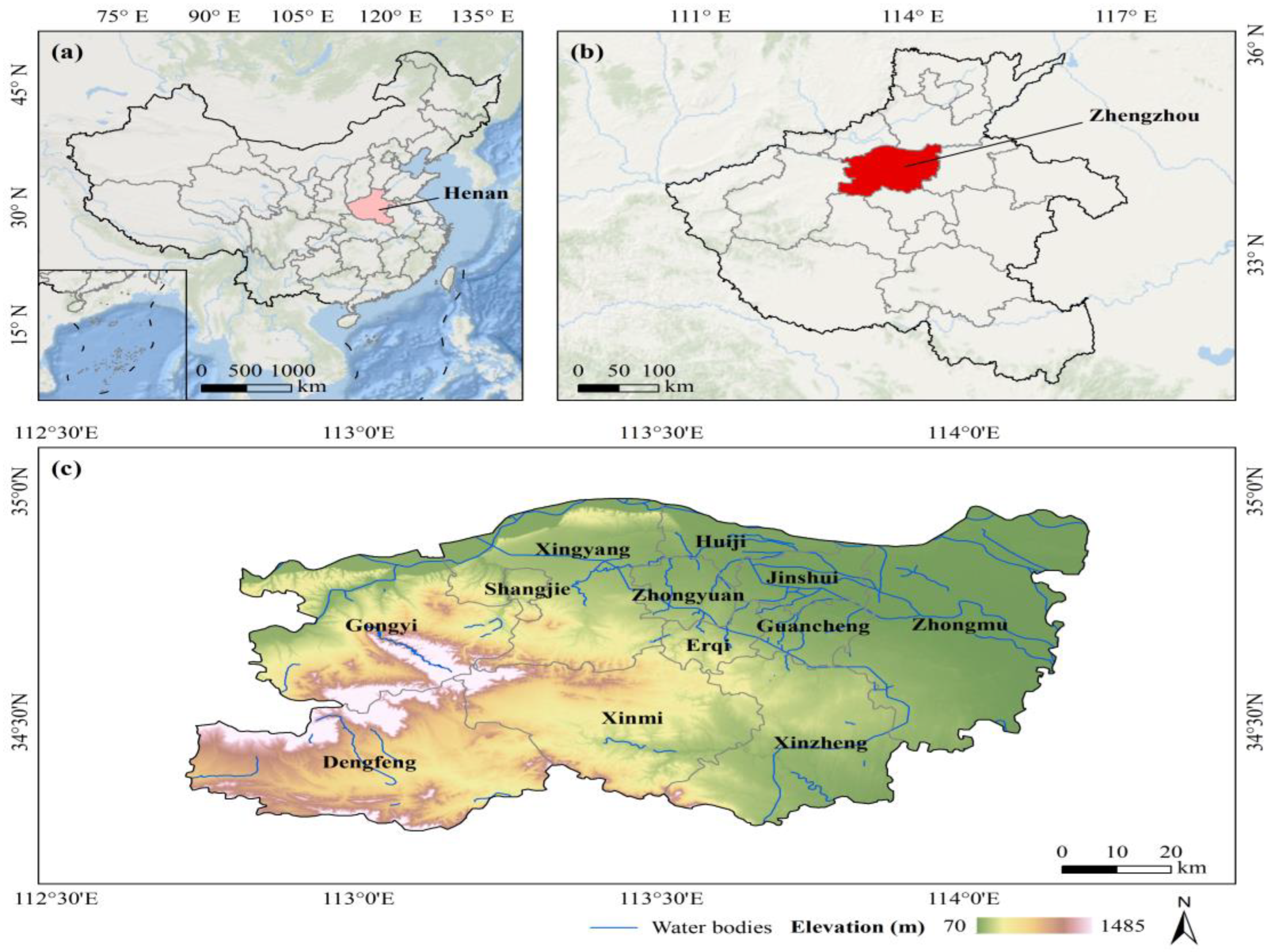
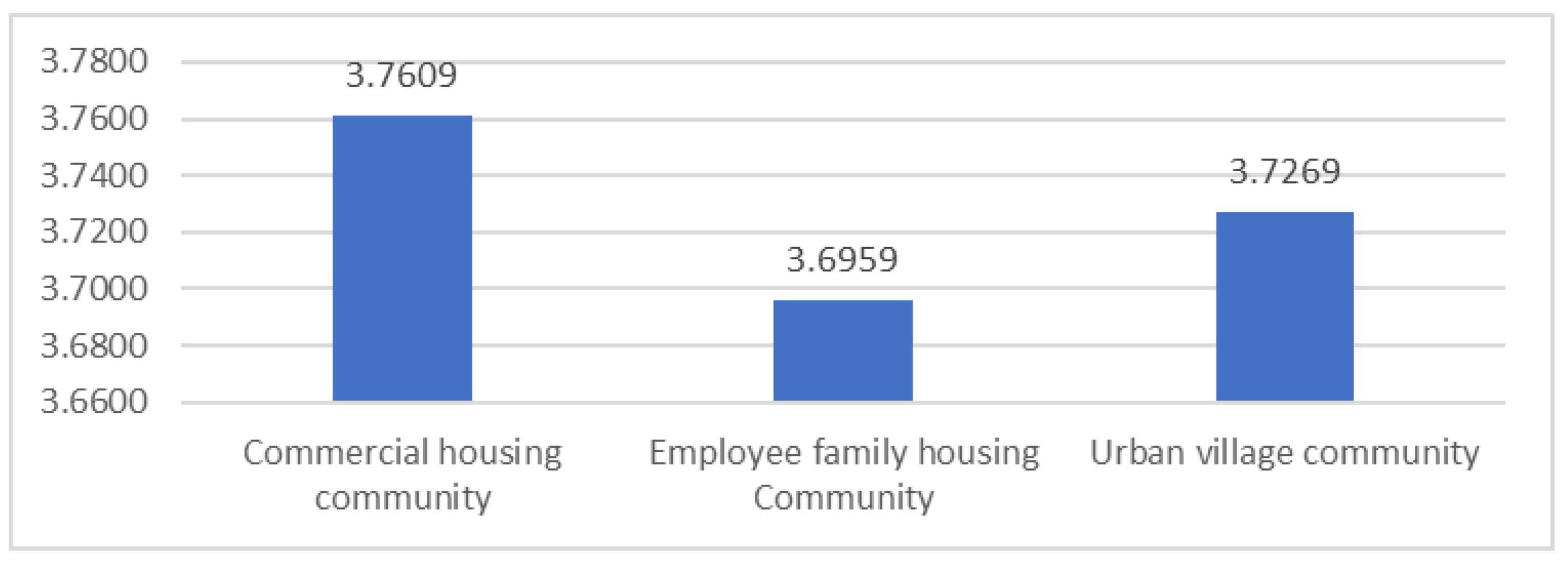
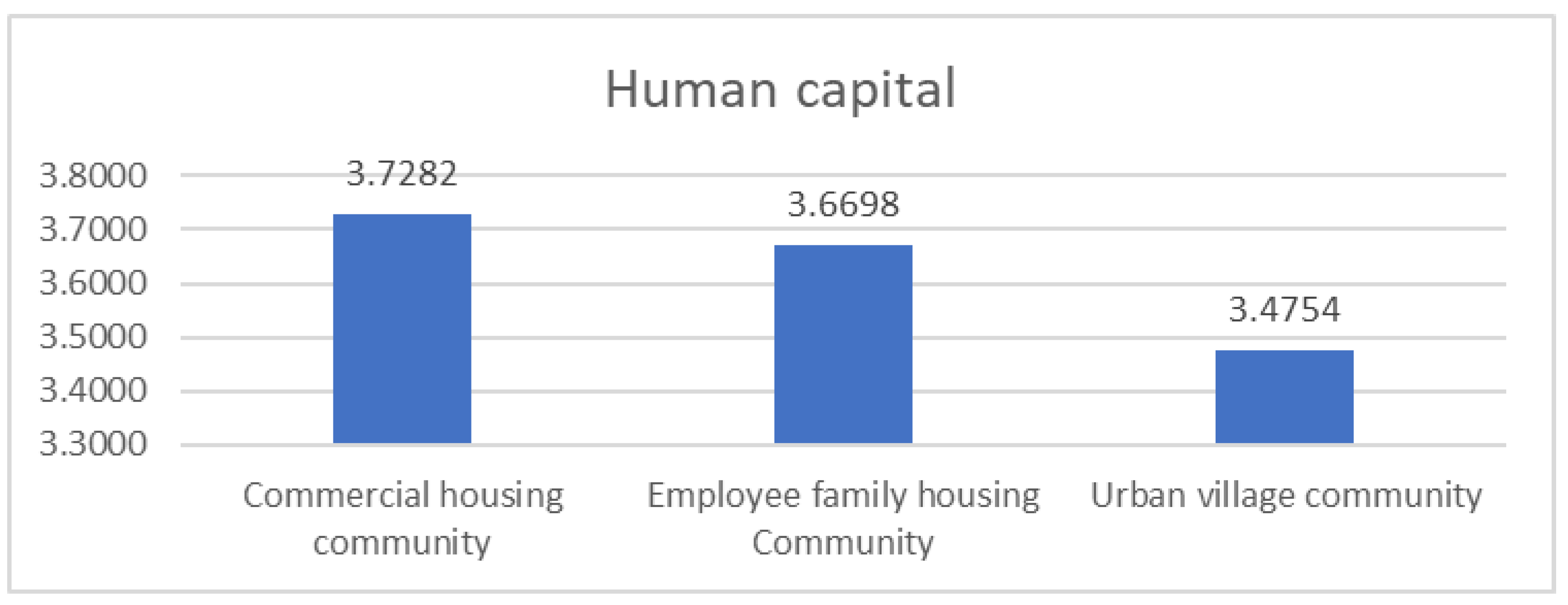

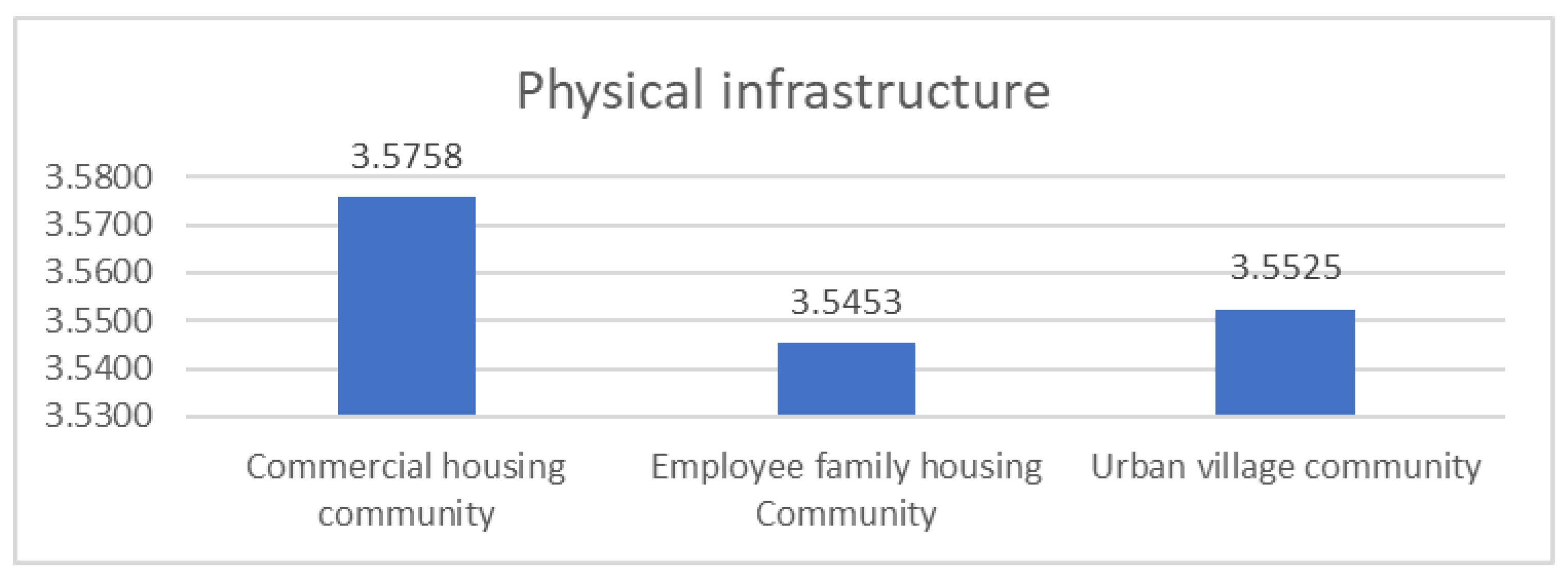
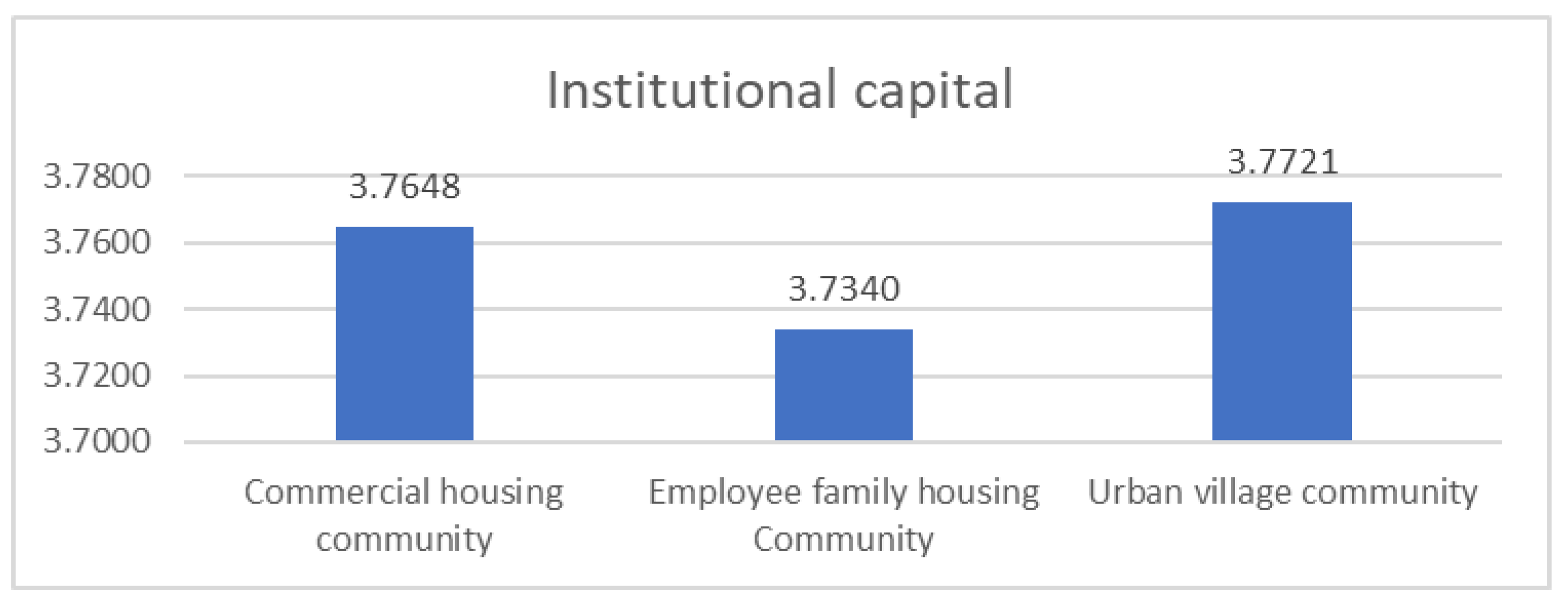
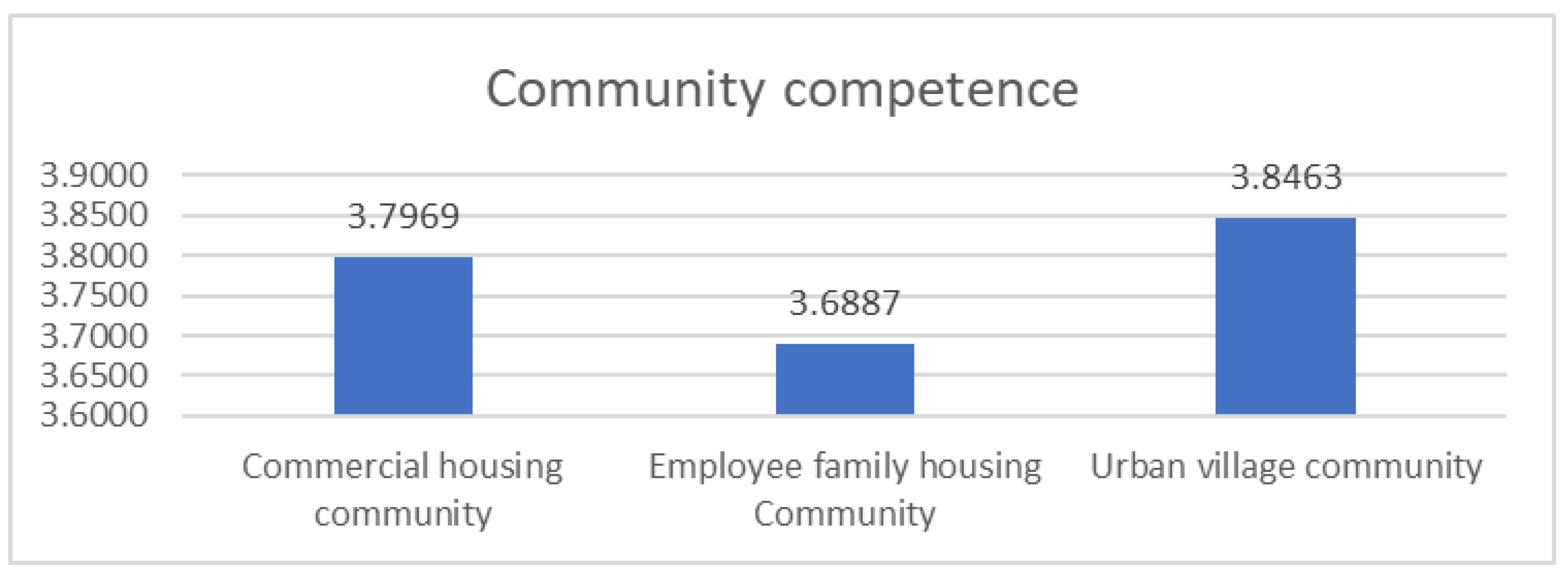
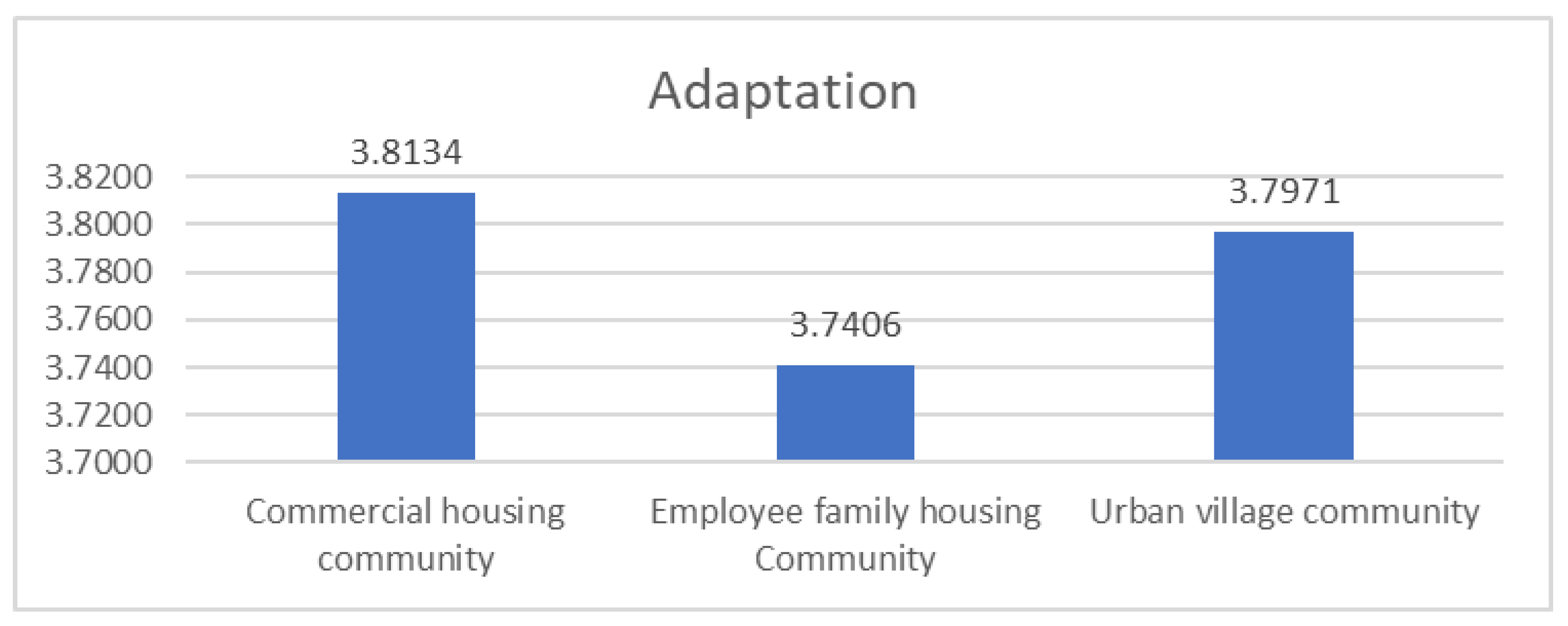
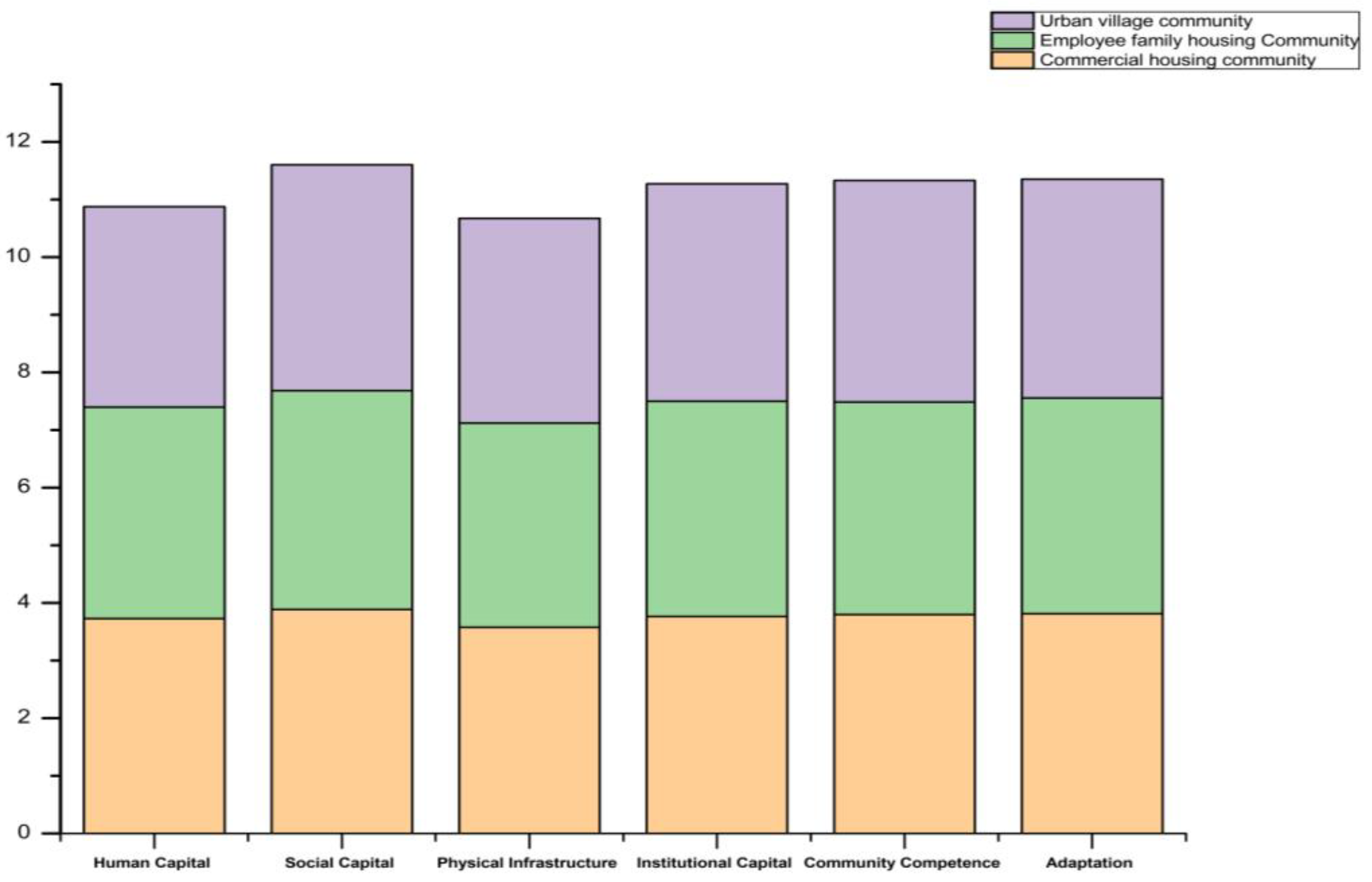
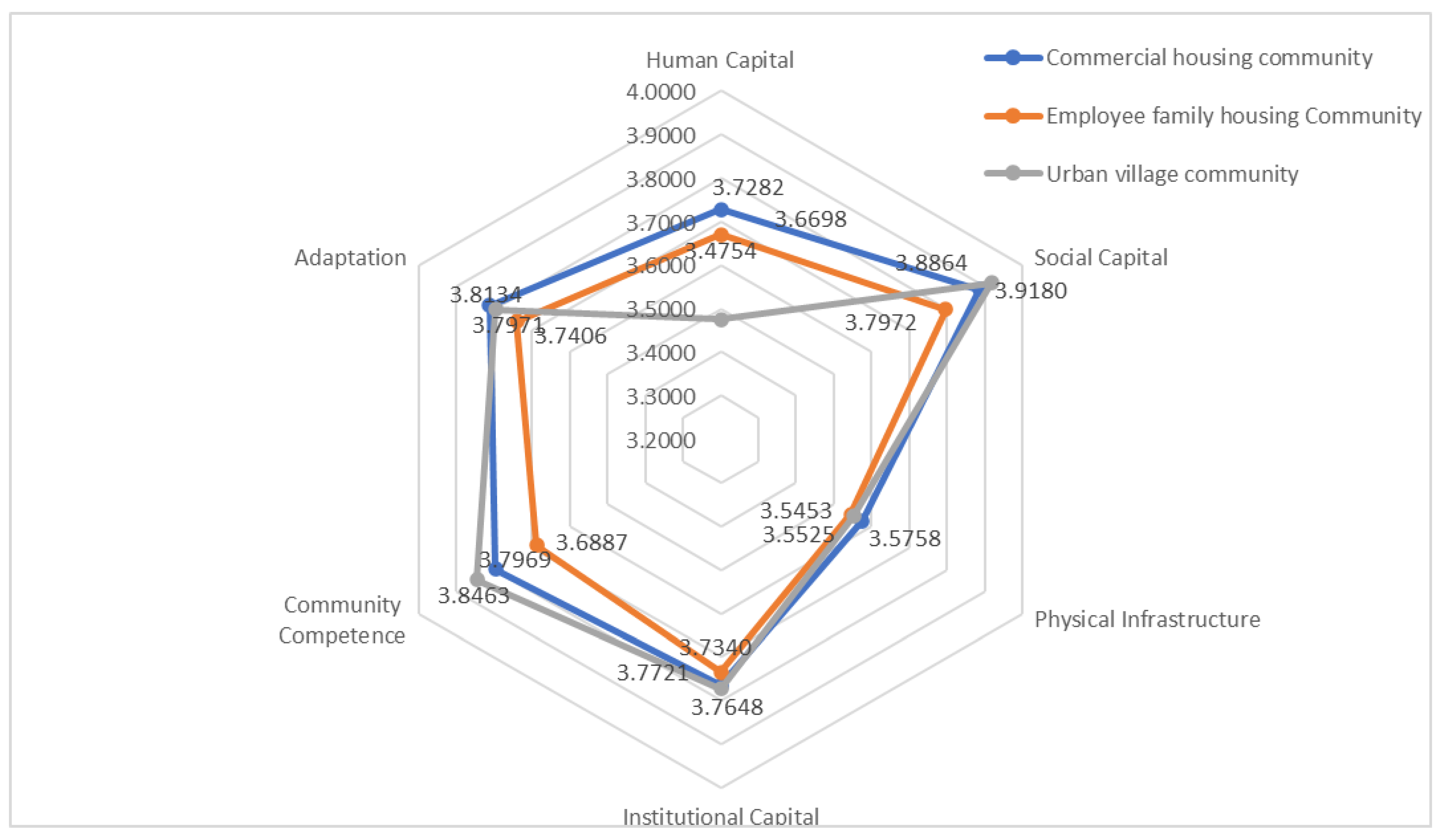
| Characteristics | Frequency | Percentage | Characteristics | Frequency | Percentage | ||
|---|---|---|---|---|---|---|---|
| Gender | Male | 109 | 41.3 | Monthly income (RMB) | <5000 | 46 | 17.4 |
| Female | 155 | 58.7 | 5000–8000 | 91 | 34.5 | ||
| Age | 20 | 8 | 3.0 | 8000–12,000 | 72 | 27.3 | |
| 21–30 | 91 | 34.5 | >12,000 | 55 | 20.8 | ||
| 31–40 | 121 | 45.8 | Monthly family income (RMB) | <10,000 | 44 | 16.7 | |
| 41–50 | 16 | 6.1 | 10,000–20,000 | 125 | 47.3 | ||
| 51–60 | 18 | 6.8 | 20,000–30,000 | 68 | 25.8 | ||
| 60 | 10 | 3.8 | >30,000 | 27 | 10.2 | ||
| Education | Less than high school | 6 | 2.3 | Home ownership | Own house | 233 | 88.3 |
| High school | 16 | 6.1 | Rented house | 21 | 8.0 | ||
| College | 32 | 12.1 | Temporary stay with relatives or friends | 3 | 1.1 | ||
| Four-year university degree | 188 | 71.2 | Staff dormitory | 7 | 2.7 | ||
| Graduate school | 22 | 8.3 | Length of residence | <1 year | 6 | 2.3 | |
| Occupation | Student | 24 | 9.1 | 1–5 years | 92 | 34.8 | |
| Government or public institution staff | 35 | 13.3 | 5–10 years | 83 | 31.4 | ||
| Company employee | 164 | 62.1 | >10 years | 83 | 31.4 | ||
| Company owner or self-employed | 27 | 10.2 | |||||
| Freelancer | 11 | 4.2 | |||||
| Other | 3 | 1.1 | |||||
| Characteristics | Frequency | Percentage | Characteristics | Frequency | Percentage | ||
|---|---|---|---|---|---|---|---|
| Gender | Male | 29 | 54.7 | Monthly income (RMB) | <5000 | 13 | 24.5 |
| Female | 24 | 45.3 | 5000–8000 | 22 | 41.5 | ||
| Age | ≤20 | 3 | 5.7 | 8000–12,000 | 12 | 22.6 | |
| 21–30 | 27 | 50.9 | >12,000 | 6 | 11.3 | ||
| 31–40 | 14 | 26.4 | Monthly family income (RMB) | <10,000 | 13 | 24.5 | |
| 41–50 | 3 | 5.7 | 10,000–20,000 | 30 | 56.6 | ||
| 51–60 | 2 | 3.8 | 20,000–30,000 | 3 | 5.7 | ||
| ≥61 | 4 | 7.5 | >30,000 | 7 | 13.2 | ||
| Education | Less than high school | 0 | 0.0 | Home ownership | Own house | 40 | 75.5 |
| High school | 4 | 7.5 | Rented house | 8 | 15.1 | ||
| College | 9 | 17.0 | Temporary stay with relatives or friends | 0 | 0.0 | ||
| Four-year university degree | 33 | 62.3 | Staff dormitory | 5 | 9.4 | ||
| Graduate school | 7 | 13.2 | Length of residence | <1 year | 4 | 7.5 | |
| Occupation | Student | 13 | 24.5 | 1–5 years | 20 | 37.7 | |
| Government or public institution staff | 13 | 24.5 | 5–10 years | 16 | 30.2 | ||
| Company employee | 21 | 39.6 | >10 years | 13 | 24.5 | ||
| Company owner or self-employed | 3 | 5.7 | |||||
| Freelancer | 2 | 3.8 | |||||
| Other | 1 | 1.9 | |||||
| Characteristics | Frequency | Percentage | Characteristics | Frequency | Percentage | ||
|---|---|---|---|---|---|---|---|
| Gender | Male | 24 | 39.3 | Monthly income (RMB) | <5000 | 19 | 31.1 |
| Female | 37 | 60.7 | 5000–8000 | 27 | 44.3 | ||
| Age | ≤20 | 5 | 8.2 | 8000–12,000 | 12 | 19.7 | |
| 21–30 | 25 | 41.0 | >12000 | 3 | 4.9 | ||
| 31–40 | 17 | 27.9 | Monthly family income (RMB) | <10,000 | 28 | 45.9 | |
| 41–50 | 4 | 6.6 | 10,000–20,000 | 23 | 37.7 | ||
| 51–60 | 7 | 11.5 | 20,000–30,000 | 3 | 4.9 | ||
| ≥61 | 3 | 4.9 | >30,000 | 7 | 11.5 | ||
| Education | Less than high school | 8 | 13.1 | Home ownership | Own house | 41 | 67.2 |
| High school | 6 | 9.8 | Rented house | 13 | 21.3 | ||
| College | 18 | 29.5 | Temporary stay with relatives or friends | 1 | 1.6 | ||
| Four-year university degree | 28 | 45.9 | Staff dormitory | 6 | 9.8 | ||
| Graduate school | 1 | 1.6 | Length of residence | <1 year | 5 | 8.2 | |
| Occupation | Student | 13 | 21.3 | 1–5 years | 22 | 36.1 | |
| Government or public institution staff | 1 | 1.6 | 5–10 years | 13 | 21.3 | ||
| Company employee | 30 | 49.2 | >10 years | 21 | 34.4 | ||
| Company owner or self-employed | 11 | 18.0 | |||||
| Freelancer | 3 | 4.9 | |||||
| Other | 3 | 4.9 | |||||
Disclaimer/Publisher’s Note: The statements, opinions and data contained in all publications are solely those of the individual author(s) and contributor(s) and not of MDPI and/or the editor(s). MDPI and/or the editor(s) disclaim responsibility for any injury to people or property resulting from any ideas, methods, instructions or products referred to in the content. |
© 2024 by the authors. Licensee MDPI, Basel, Switzerland. This article is an open access article distributed under the terms and conditions of the Creative Commons Attribution (CC BY) license (https://creativecommons.org/licenses/by/4.0/).
Share and Cite
Zhai, L.; Lee, J.E. Exploring and Enhancing Community Disaster Resilience: Perspectives from Different Types of Communities. Water 2024, 16, 881. https://doi.org/10.3390/w16060881
Zhai L, Lee JE. Exploring and Enhancing Community Disaster Resilience: Perspectives from Different Types of Communities. Water. 2024; 16(6):881. https://doi.org/10.3390/w16060881
Chicago/Turabian StyleZhai, Linpei, and Jae Eun Lee. 2024. "Exploring and Enhancing Community Disaster Resilience: Perspectives from Different Types of Communities" Water 16, no. 6: 881. https://doi.org/10.3390/w16060881
APA StyleZhai, L., & Lee, J. E. (2024). Exploring and Enhancing Community Disaster Resilience: Perspectives from Different Types of Communities. Water, 16(6), 881. https://doi.org/10.3390/w16060881








